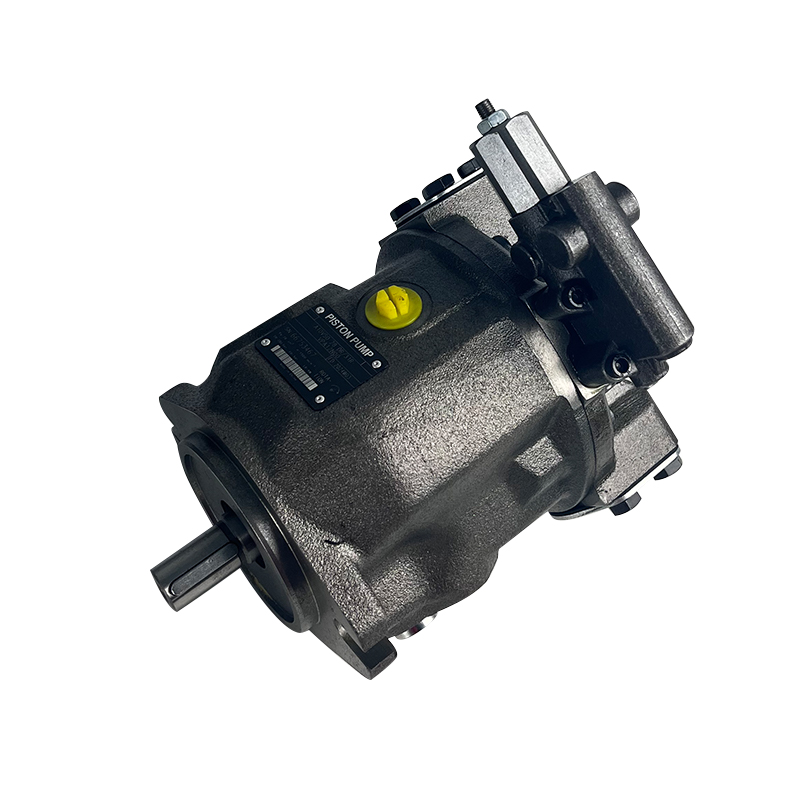The service life of hydraulic piston pumps is closely related to their working pressure, because high-pressure working conditions will cause significant mechanical stress and wear on the key components of the pump (such as pistons, cylinders, valve plates, seals, etc.). The following is a detailed analysis of the mechanism of how working pressure affects the life of hydraulic piston pumps and the corresponding solutions.
1. The mechanism of the influence of working pressure on service life
(1) Increased mechanical stress
Under high-pressure conditions, the various components of the piston pump are subjected to greater mechanical loads. For example:
The contact surface between the piston and the cylinder will be subjected to higher radial and axial forces.
The sealing surface between the valve plate and the cylinder needs to withstand a higher pressure difference, which may cause local stress concentration.
These additional stresses will accelerate material fatigue and deformation, reducing the service life of the components.
(2) Increased wear
Under high-pressure conditions, the friction between the piston and the cylinder increases, resulting in faster wear.
If the lubrication conditions are insufficient (such as insufficient lubricating oil film thickness or oil contamination), dry friction may occur between metal parts, further exacerbating wear.
(3) Seal failure
High pressure will cause seals (such as O-rings, lip seals, etc.) to bear greater extrusion pressure, which may cause permanent deformation or rupture of the seals.
Seal failure will lead to leakage, which will reduce the efficiency of the pump and increase the risk of failure.
(4) Thermal effect
High-pressure conditions are usually accompanied by higher energy losses (such as internal leakage and friction loss), which are released in the form of heat.
Rising temperature will accelerate material aging (such as hardening or cracking of rubber seals) and reduce the performance of lubricants, thereby shortening the service life of the pump.
(5) Vibration and noise
High-pressure operation may cause pressure pulsation and flow fluctuations, which will cause vibration and noise.
Continuous vibration will accelerate the fatigue failure of key components (such as bearings and connectors).
2. Solutions to extend service life
(1) Optimized design
High-strength materials: Select materials with stronger fatigue resistance (such as high-strength alloy steel or ceramic coating) to improve the pressure resistance of key components.
Precision machining: Ensure the appropriate fit clearance between the piston and the cylinder through high-precision machining to reduce leakage and friction loss.
Improve the design of the valve plate: optimize the angle and surface roughness of the valve plate to reduce pressure pulsation and flow fluctuation.
(2) Strengthen lubrication
Ensure that high-quality hydraulic oil is used in the hydraulic system and is replaced regularly to maintain good lubrication performance.
Under high-pressure conditions, anti-wear hydraulic oil (such as lubricants containing zinc or zinc-free anti-wear additives) can be used to reduce friction and wear.
Consider the thickness and distribution of the lubricating oil film during the design process to avoid dry friction caused by too thin an oil film.
(3) Cooling measures
Under high-pressure conditions, install a cooling device (such as an oil cooler or air cooling system) to control the oil temperature and pump body temperature.
Monitor the oil temperature regularly to avoid material aging and performance degradation due to overheating.
(4) Improvement of seals
Use high-performance sealing materials (such as fluororubber or polytetrafluoroethylene) to improve the pressure resistance and anti-aging performance of seals.
Consider the compression and preload of the seal in the design to avoid early failure caused by excessive extrusion.
(5) Vibration and noise reduction
Install vibration reduction devices (such as rubber pads or spring shock absorbers) around the pump body to reduce vibration transmission.
Use silencers or optimize pipeline design to reduce noise and pressure pulsation.
(6) Regular maintenance
Regularly check the oil cleanliness of the hydraulic system to avoid wear or jamming caused by contaminants.
Regularly check the status of seals and replace aged seals in time.
Monitor the working pressure and temperature of the pump to avoid long-term overload operation.
3. Precautions in practical application
(1) Reasonable selection of working pressure
Select the appropriate pump model and rated pressure according to actual needs to avoid long-term operation under conditions close to or exceeding the rated pressure.
For application scenarios that require frequent high-pressure operation (such as engineering machinery or aerospace), a high-pressure dedicated pump should be selected.
(2) Load balancing
In multi-piston pumps, ensure that the load between the pistons is evenly distributed to avoid local overload and wear caused by uneven load.
(3) Environmental adaptability
In extreme environments (such as high temperature, low temperature or corrosive environment), select suitable materials and protective measures to extend the service life of the pump.
The service life of the hydraulic piston pump is significantly affected by the working pressure, mainly reflected in mechanical stress, wear, seal failure and thermal effect. By optimizing the design, strengthening lubrication, improving seals, controlling temperature and regular maintenance, the service life of the pump can be effectively extended and its reliability can be improved. In addition, in practical applications, the reasonable selection of working pressure and load range is also an important factor to ensure the long-term stable operation of the pump.

 English
English русский
русский Español
Español عربى
عربى

